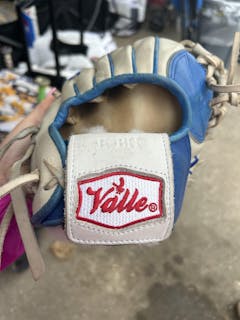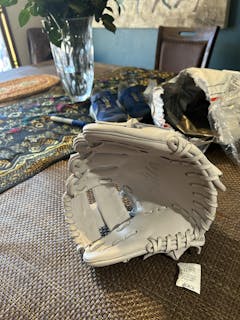Shipping in USA
A quality slow pitching softball machine can provide the repetitions and variety you need to improve your swing mechanics and timing. See what machines works best for you from our collection based on the features and functionality each offers.
Read more
Overview of Slow Pitch Softball Pitching Machines
Slow pitch softball pitching machines are designed to simulate the underhand pitching motion and ball flight seen in slow pitch games. They allow hitters to practice against realistic pitch speeds and trajectories in a controlled environment. Most machines are adjustable, letting you dial in the speed, height, and angle to work on different aspects of your hitting. You can also buy baseball ball launcher to go along with your pitching machine.
Slow Pitch Softball Pitching Machine Product Types
While there are many variations, slow pitch softball pitching machines generally fall into a few main categories:
Wheel Machines
Wheel-style machines use one or more spinning wheels to propel the ball toward the batter. They offer adjustable speed and can often throw a variety of pitch types by tilting the machine head. Wheel machines are typically more affordable and portable than arm-style machines. You can also purchase ball thrower machines from our collection.
Arm-Style Machines
Arm-style pitching machines have a mechanical arm that delivers the ball with a more realistic throwing motion. They tend to be more expensive but offer greater accuracy and consistency. Some high-end models can even mimic specific pitch types like risers and sinkers.
Combo Machines
Some pitching machines are designed to throw both softballs and baseballs, making them a versatile option for multi-sport athletes or families with players of different ages. Just be sure to use the appropriate ball type for your training session. Want a ground ball machine instead?
How to Choose a Slow Pitch Softball Pitching Machine
When choosing a pitching machine, consider your skill level, training goals, and budget. Beginners may prefer basic wheel machines with adjustable speed, while experienced hitters might benefit from programmable features.
Identify specific hitting aspects you want to improve, such as mechanics or pitch recognition. Machines range from budget-friendly to high-end models, so find the best value for your needs. Consider usage location - a larger, powerful machine for home batting cages, or a lightweight, portable option for field use.
Prioritize durability with sturdy frames, reliable motors, and well-designed feeding systems to ensure smooth operation and longevity. Balance these factors to select the ideal machine for your training requirements.
At The Baseball Home, we offer a designed selection of slow pitch softball pitching machines to fit every skill level and budget. Whether you're a beginner looking to build confidence at the plate or a seasoned slugger fine-tuning your shots, we have the tools you need to better your game. Browse our collection today and start unlocking your full hitting potential!
FAQs
Q: What types of softballs can slow pitch pitching machines throw?
Ans: Most slow pitch softball pitching machines can throw dimpled softballs, leather softballs with flat seams, and real softballs. Some machines may have specific requirements, so always check the manufacturer's recommendations.
Q: What speed range should I look for in a slow pitch softball pitching machine?
Ans: Look for a pitching machine that can throw softballs at speeds between 15-60 mph, depending on your league's regulations and skill level. Some machines offer a wider range of speeds for more versatility.
Q: How do I adjust the arc on a slow pitch softball pitching machine?
Ans: Different machines have various methods for adjusting arc. Some have dials or levers to change the angle of the pitching head, while others require manual tilting. Check your machine's manual for specific instructions.
Q: Are slow pitch softball pitching machines battery-powered?
Ans: Most slow pitch pitching machines are electric-powered and need to be plugged into an outlet. Battery-powered machines are less common due to longer recovery times between pitches and diminishing power over time.
Q: Can I use a generator to power my slow pitch softball pitching machine?
Ans: Yes, but the generator must provide "clean electricity". A minimum 1000W up to 2000W Honda generator with inverter technology is recommended for consistent pitching performance.
Q: What is the ball feed rate of slow pitch softball pitching machines?
Ans: The ball feed rate, or recovery time between pitches, varies by machine. Look for a machine with a feed rate of 3-8 seconds for efficient batting practice. Some machines come with automatic ball feeders for continuous pitching.
Q: How portable are slow pitch softball pitching machines?
Ans: Portability varies by model. Most machines can be broken down into separate pieces (legs, base, head) for easier transport. Look for machines with rolling wheels for easy movement on and off the field.
Q: What is the price range for slow pitch softball pitching machines?
Ans: Prices for slow pitch pitching machines range from around $500 for basic models to over $3000 for high-end, feature-rich machines. Establish your budget and training needs to find the best machine for your price point.
Q: Do I need a special power cord for my slow pitch softball pitching machine?
Ans: Most machines require a minimum #14/3 grounded power cord up to 200 ft in length. For longer cords, consult a licensed electrician to ensure your cord meets the machine's power requirements.
Q: What safety features should I look for in a slow pitch softball pitching machine?
Ans: Look for machines with enclosed wheels to prevent injury, safety interlocks to avoid accidental activation, and durable construction to withstand impact from balls. Always follow the manufacturer's safety guidelines during use.














































































